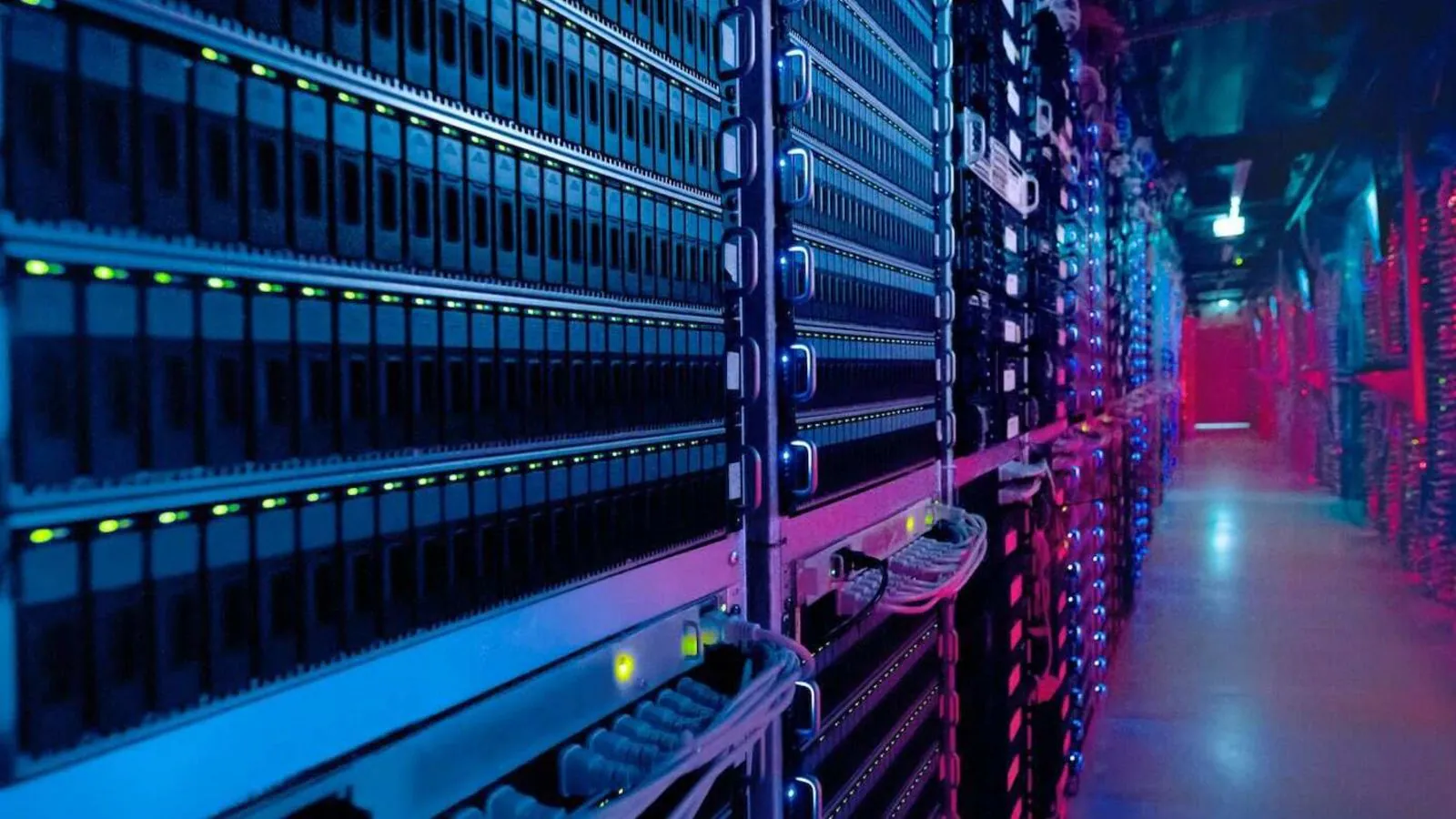
India’s Data Center Scene: Looking Back and Forward

Over the past ten years, there has been a significant development in India’s data center business. The industry has changed in reaction to increased digital use, governmental reforms, and technological improvements, going from humble origins to become a booming center of digital infrastructure. This article will highlight significant developments and milestones as we examine the early and current states of India’s data center business.
Early Stages: Slow Growth and Limited Infrastructure
India’s data center market was still in its infancy in the early 2010s. The following issues inhibited the industry’s growth:
- Limited Infrastructure: Major cities like Bangalore, Delhi, and Mumbai were home to the majority of the world’s data centers, which were few and far between. Compared to modern data centers, these early ones were quite tiny in size and lacked technology.
- Lack of Investment: Few companies were ready to enter this capital-intensive industry, which resulted in a lack of investment in data center infrastructure. Many potential investors were put off by the exorbitant cost of land, electricity, and connectivity.
- Regulatory Environment: There was a lack of development in the data center regulatory structure. There were no particular laws or rewards in place to encourage the industry’s expansion. The absence of guidance and assistance resulted in an unsteady commercial atmosphere.
- Low Digital Penetration: India had a generally low level of digital penetration. There was little knowledge of and uptake of digital services among businesses and consumers, and internet connectivity was patchy and poor.
- Energy Issues: Reliable power supplies and expensive energy were major issues for early data centers. The use of non-renewable energy sources increased operating costs and raised environmental issues.
Also Read: ISRO’s PUSHPAK Spacecraft successfully clears the Third test of the Landing Demonstration
Also Read: Discover India’s data center growth from modest beginnings to a booming industry, projected to reach 17 GW by 2030.
Private Sector Investments and Enthusiasm
In addition to government initiatives, the business sector has demonstrated a surprising eagerness to invest in data centers. Prominent domestic and international businesses are investing heavily to take advantage of India’s expanding digital economy. Notably, significant data center projects in India have been launched by tech behemoths like Alibaba Cloud, Google Cloud, Microsoft Azure, and Amazon Web Services (AWS).
For example, by 2022, AWS intends to invest $2.8 billion to establish several data centers in Hyderabad. In response to growing demand from companies and government organizations, Google Cloud has opened its second cloud region in Delhi NCR, after opening its first in Mumbai. In a similar vein, Microsoft Azure has increased the number of data centers it operates in India in order to serve its expanding clientele and offer cutting-edge cloud services.
A significant portion of this boom is being contributed by Indian businesses. While Reliance Jio is making investments in data center infrastructure to serve its digital services ecosystem, Adani Enterprises has committed to building hyperscale data centers across the nation. The exponential growth in data consumption, which is being driven by the proliferation of smartphones, the development of high-speed internet, and the rise in digital transactions, is driving investments.
Factors Fueling the Growth of Data Centers

Data centers are expanding quickly in India due to a number of causes. First off, there is a huge need for data processing and storage capacity due to the growing digitalization of government and business activities. Data Centers became even more important when the COVID-19 epidemic boosted the use of digital platforms for business, education, healthcare, and entertainment.
Second, data center investments are rising as a result of data localization laws that force businesses to keep data domestically. Local data centers have been established in order to meet with regulatory requirements, as a result of pending data protection laws and the Reserve Bank of India’s obligation for payment system operators to store data locally.
Building a robust data center infrastructure is essential due to the massive amounts of data produced by new technologies such as the Internet of Things (IoT) and 5G networks. Businesses using artificial intelligence (AI), machine learning, and big data analytics are also driving the increased demand for data centers.
The Transformation: Catalysts for Change
India’s data center market has changed over the last ten years due to a number of significant developments:
- Government projects: To encourage digital infrastructure, the Indian government started a number of projects. The goal of the 2015 launch of the Digital India campaign was to make India a knowledge economy and society empowered by technology. Strong digital infrastructure is required, and this was further highlighted in the National Digital Communications Policy (NDCP) 2018.
- Policy Support and Incentives: To entice data center investments, state governments implemented policies. To entice data center investments, Maharashtra, Tamil Nadu, and Telangana, for instance, provided incentives like tax rebates, reduced land costs, and expedited regulatory approvals.
- Increased Investment: Both international and domestic investments have increased significantly. Global tech behemoths such as Google, Alibaba, Microsoft, Amazon Web Services (AWS), and others have announced significant investments in the construction of data centers in India. Adani Enterprises and Reliance Jio, two Indian corporations, have also committed to building massive data centers.
- Better Connectivity: Digital access has been substantially enhanced with the introduction of high-speed internet services, such as fiber optic networks and 4G (and soon 5G) connectivity. Due to the widespread use of digital solutions by consumers and enterprises, there is a greater need for data center services.
- Data Localization: It is required by regulatory measures such data localization requirements that data created in India be stored there. In order to comply with rules, this has prompted corporations to invest in local data centers.
- Technological Developments: Data center services now have more options thanks to developments in artificial intelligence, cloud computing, and big data analytics. The need for data center infrastructure is being further stimulated by the growing adoption of these technologies by businesses.
Also Read: Russia Plans to build The Most Powerful Aircraft Carrier Ever a 100,000-Ton Maritime Powerhouse for its Navy
Also Read: Hindustan Aeronautics Limited (HAL) Receives RFP From MoD for Procurement of LCH Helicopters
Current State: A Booming Industry
The data center market in India is currently flourishing and is distinguished by:
- Rapid Expansion: By 2030, data center capacity is expected to have increased to 17 GW, according to forecasts. Nationwide, new data centers are being built, with an emphasis on Tier 1 and Tier 2 cities.
- Diverse businesses: The market currently includes a wide spectrum of businesses, including local conglomerates, specialized data center operators, and multinational tech giants. The sector is now more innovative and competitive as a result of this diversity.
- Sustainable Practices: Sustainability is becoming more and more important. Businesses are putting money into green data centers, which use energy-efficient technologies and renewable energy sources. Through a number of incentives, the government is also encouraging the use of renewable energy in data centers.
- Modern features seen in India’s more recent data centers include advanced cooling systems, strong cybersecurity protections, and fast internet. These facilities are made to satisfy the increasing needs of businesses and consumers.
- Supportive Regulatory Framework: With well-defined rules and regulations, the regulatory landscape has evolved to be more favorable to the expansion of the data center sector. As a result, there are now more investments because of the favorable business environment.
With a projected capacity of 17 GW for data centers by 2030, India is determined to establish itself as a global hub for data centers. As the industry grows, the government prioritizes innovation, sustainability, and regulatory support. India is putting itself in a position to lead the data center business and maintain its digital economy for many years by addressing problems like a consistent power supply and personnel training.





